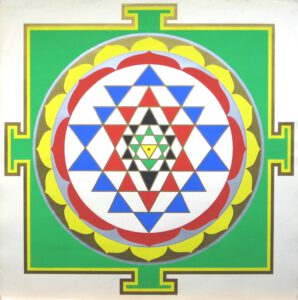How to meditate is a question that often arises as to whether one is meditating correctly or…
Meditation
Meditation

Meditation is a mental practice to calm the mind and achieve heightened awareness. This state of concentration and mindfulness is often achieved by focusing on a certain breathing rhythm, a mantra, a thought, an object or even the sensations in one’s own body.
There are many different variations:
- Mindfulness meditation: Here the focus is on consciously observing thoughts, emotions, bodily sensations and the environment without judging or pursuing them.
- Concentration meditation: In this form, the meditator concentrates on a single point, such as the breath, an image or a mantra. The aim is to focus the mind and minimize distracting thoughts.
- Transcendental meditation: This technique uses a repeated mantra to bring the mind into a state of deep relaxation and expansion of consciousness.
- Loving-Kindness Meditation (Metta): This meditation aims to cultivate love and compassion by sending positive thoughts and wishes for oneself and others.
- Vipassana meditation: This is about accepting reality as it is and gaining deep insight into the nature of the mind and reality.
The benefits of learning meditation are manifold and range from stress reduction to emotional stability and improved cognitive function. It can help to change your perception of thoughts and emotions and create a deeper connection with yourself. Scientific studies have shown that regular meditation can have long-term positive effects on the brain and mental health.
Deep-seated blockages
On a spiritual level, we penetrate our mind and even go beyond it. From a yogic perspective, meditation is so important because in deep meditation we dissolve the deep-seated kleshas (attachments, blockages). These kleshas can be caused by past karma or unprocessed sensory impressions. These are firmly embedded in our mind. Following a natural process, these kleshas want to dissolve again and make themselves felt through emotions, thoughts or dreams.
If we block our attention to these kleshas, they remain stuck and we move in the same cycle over and over again. Physical activities or breathing techniques can hardly reach these kleshas. They only dissolve in deep meditation.
How our mind works
Our mind is influenced by strong external stimulation and distracts us from our inner state. Entertainment and overstimulation can lead to boredom or depression through algorithms. This then causes us to seek out new stimuli and a process of self-alienation and constant loss of attention is set in motion. Attention disorders such as ADHD develop because we are not taught how to train our mind or how it works at all.
Training the mind means reducing external stimuli so that the mind can create and develop its own content. We are hardly aware of how content and influences regulate our mind instead of strengthening it naturally.

In our education system and in modern society in general, mental exercises to develop attention are practically non-existent. This results in a reduced interest in life due to a low level of attention. As a result, we become depressed and in turn cover up this depression with chemical substances and other external distractions.
Regaining our power of attention and learning to cultivate it is one of the main goals of yoga practice. Real meditation (dhyana) is not possible without first developing the power of attention (dharana).
There is no real meditation for a wandering or distracted mind. Simply sitting and indulging in our restless thoughts is not meditation. Meditation is also not an empty mind, without a specific thought or focus. Meditation begins with a focused mind and a decision to turn our attention inward.
A key principle of yoga is that the mind focused on one point comes to rest. The prerequisite for this is the ability to focus for a long time without interruption.
The ambivalent nature of the mind
The mind has an interesting twofold nature. First, it has a central beam or point of attention that moves quickly from one object or consideration to another. You can observe this very easily. Just sit quietly and watch the mind jump from one thing to another in rapid succession. Because of this tendency, the mind is often referred to as a monkey mind.

Secondly, the mind has a field of consciousness that, despite this jumping from point to point, retains a certain sense of what is going on in the environment as a whole. Our mind does the incredible work of focusing us without losing ourselves too much in this focus. At the same time, we have an awareness of our world without getting lost in it.
It has both a central and a peripheral awareness. In this respect, the point of mind can extend to the entire field of perception. It has no fixed size, although it tends to remain in a small area. To stabilize this flexible field, we focus the entire field on one point. One way to do this is to focus the mind on one object.
Active and passive meditation
Broadly speaking, there are two main types of meditation – passive and active. Passive forms of meditation are primarily observational in nature. They consist of observing one’s own thoughts, observing the breath, being mindful of the body or observing objects and situations in the external world without making a decision or judgment. Other forms of passive meditation can consist of contemplating a deity or a cosmic principle such as space in order to become one with it.
Active inquiry consists of asking fundamental questions about who we are and what our lives mean. Most of the Upanishads, the ancient scriptures of the yoga tradition, consist of various forms of questioning. The most important questions taken up in exploratory meditation are essentially questions about the self, God, prana, the mind and the senses as well as the process of birth and death.
Active meditation here is also clearly mantra meditation or object-oriented meditation in general. This means that we focus our mind on an object in order to meditate on it.
Active Meditation
On the path of evolution through meditation, passive meditation can lead to problems. The main problem with passive forms of meditation is that you can get stuck, trapped in an empty state of mind or in a form of contentment that is not complete. You end up in a thoughtless state or mistake the mere drifting in your distracted mind for a genuine state of higher peace. There are many empty states of mind one can fall into that are not self-realization, but forms of dullness, sleep, or simply a certain amount of mental rest and relaxation.

Shri Yantra – Tool for concentration
Active meditation corresponds in the first place to our modern disposition to control things and become active. Secondly, it has the advantage of balancing both dispositions of the mind. If we have too little energy to meditate, the active approach can wake us up and give us the energy to meditate. If we have too much restless energy, our mind can work through the active action and find peace.
Passive Meditation
Passive meditation requires the prerequisites of a natural and meditative way of life that is already so strong that we can already enter meditation without any special effort. Our practice naturally becomes more passive over the years. For faster progress at the beginning, the focus on active meditation is best.
Active forms of meditation can bring a quality of rajas or restlessness in which we miss our basic state of peace and happiness, which is very subtle, and get caught up in a stream of distracted thoughts.
Balance in Meditation
For this reason, it is usually best to practice both active and passive forms of meditation, just as you can both tense and stretch a muscle. Passive forms of meditation, such as a form of conscious sleep, can renew the mind. Active forms of meditation, such as a mantra, can revitalize the mind.
In conclusion, practical experience is the key. Years of practice are essential, especially for this spiritual practice that brings magic and transformation into our lives through the experience itself. I hope that through this article you understand how the mind works and the basic principles of meditation. If you have any further questions, feel free to write to me.
Namaste.
Zen meditation is also known as zazen in Zen Buddhism. It is a current in Buddhism with…
Vipassana meditation is an ancient meditation technique that has its origins in ancient India. It was developed…
Hello! I am delighted to welcome you to this site. My name is Sven Horn, and I…
Self-healing through meditation is the topic of this article. In most cases, the healing effects of meditation…
Deep meditation as the goal of meditation. In yoga, the ability to enter deep meditation means leaving…
Healing your inner child can be best achieved through meditation. Are you looking for a deep inner…
The question “Does meditation work?” is of no small importance, as meditation has numerous positive effects on…
Body scan meditation is a popular method for promoting deep relaxation and mindfulness. By directing your focus…
What is metta meditation? Metta meditation, also known as loving kindness meditation, is an ancient practice that…
What is transcendental Meditation? Transcendental meditation is a simple variant of mantra meditation based on ancient Vedic…
Sleep meditation helps with the today’s fast-paced world that often can rob us of restful sleep. If…
What is mantra meditation? Mantra meditation is thousands of years old What is mantra meditation? Mantra meditation…
These 10 tips for meditation are intended to provide a quick overview of the issues that arise…
Meditation and Mantra Meditation Mantra meditation differs from other forms of meditation in the use of a…
Meditation to fall aslepp for everyone. The decisive factor here is the sequence from the gross to…
How to learn meditation. This text is particularly suitable for experienced practitioners. You can find a more…